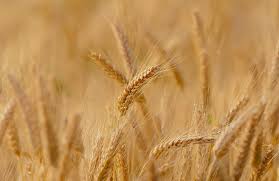Wheat sowing at peril as floods, rains delay paddy harvest in Punjab
By Gurpreet Singh Nibber
The recent floods — the worst in four decades — and the subsequent October rains have disrupted Punjab’s agricultural cycle this year, with experts warning that the setback could hit next year’s wheat yield.
Last season’s wheat was sown over 35 lakh hectares (86 lakh acres) with 182 lakh tonnes of the crop procured.
The prolonged wet spell and deluge have already delayed paddy harvesting by nearly a month, narrowing the ideal window for sowing wheat. So far, only about 20% of the kharif crop sown over 32.5 lakh hectares (80 lakh acres) has been harvested.
To date, nearly 30 lakh tonnes of paddy have arrived in the mandis, which is less than 17% of the total expected harvest of 175 lakh tonnes. Moreover, officials in the agriculture department said that harvesting has been completed in just 20% of the total area under the paddy crop.
“Ideally, the wheat sowing should start from October 15 and can be completed up to mid-November. But in the current season, it will be tough to complete wheat sowing on time,” said an official in the state agriculture department, pleading anonymity.
Punjab Agricultural University (PAU), vice-chancellor, SS Gosal, concurs and said delayed wheat sowing would affect the yield.
“The harvest will continue for at least 13-20 more days, which is the peak and most ideal sowing period for wheat. In case the window is missed, it will adversely impact the wheat yield,” the VC said.
The food and civil supplies, and agriculture departments were expecting 185 lakh tonnes of paddy arrival this year before the floods hit. With deluge affecting crop over 2 lakh hectares, followed by incessant rainfall, the estimates have been lowered to 175 lakh tonnes. This year, paddy procurement was advanced to September 16.

The agriculture department predicts a fall of 5-6 quintal per acre. Last year, 182 lakh tonnes of paddy was procured.
“Had it been a normal season without excessive rainfall and floods, the procurement would have crossed 80 lakh tonnes by now, because short-duration varieties sown this year over large areas would have matured early,” said the food department official quoted above.
Gosal added that the flood-affected belt in Tarn Taran, Gurdaspur, Amritsar, Fazilka, Ferozpur, Kapurthala, Jalandhar, and Mansa districts are still struggling to clear silt from the fields, which will also delay the sowing.
The state government’s special girdawari to assess flood damage has concluded that crop over 2.97 lakh acres has been completely damaged, and PAU has also flagged the issue of thick silt deposits in fields, which, experts say, farmers cannot clear on their own to make the land cultivable again.
Though the state government has sought ₹25,000 per acre for clearing sand from the fields, it is likely to be a time-consuming task.
GFX
Rabi sowing delayed
Oct 15 – Nov 15
Ideal period for wheat sowing
86 lakh acres
Area under wheat last season
80 lakh acres
Area under paddy
30 lakh tonnes
Paddy arrivals in the mandis, just 17% of total crop expected
175 lakh tonnes
Total paddy arrivals expected this season
This article has been republished from The Hindustan Times.

